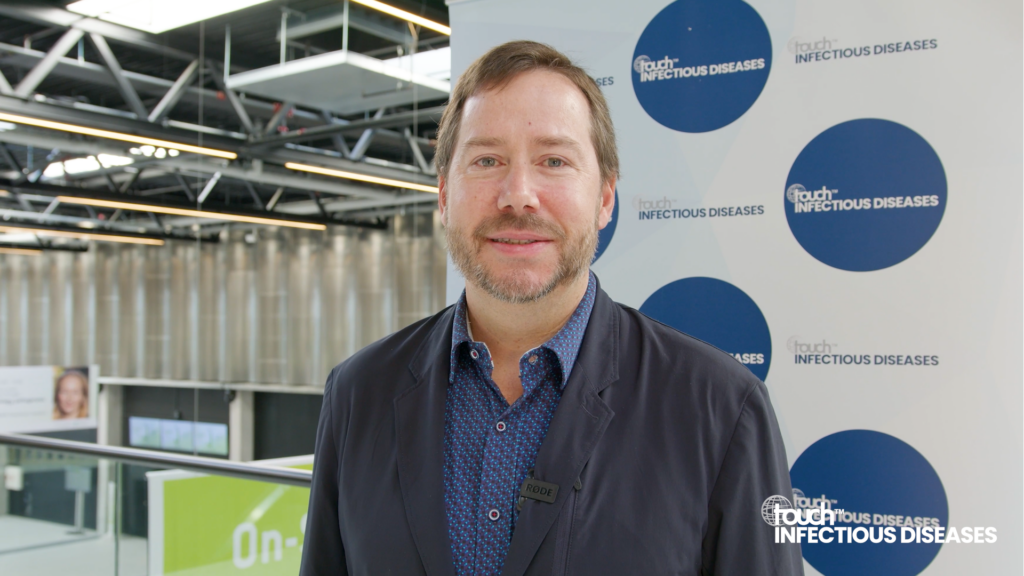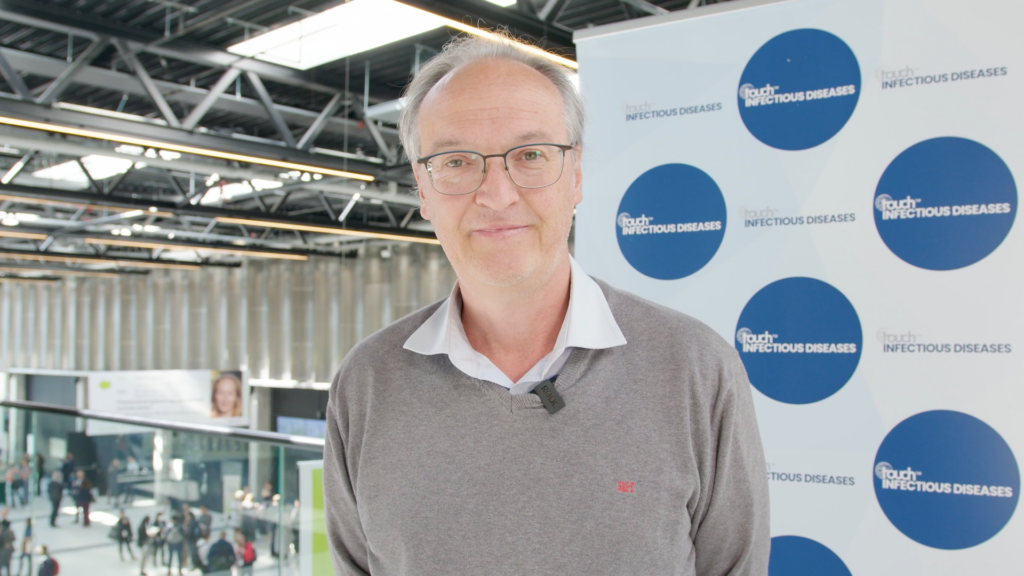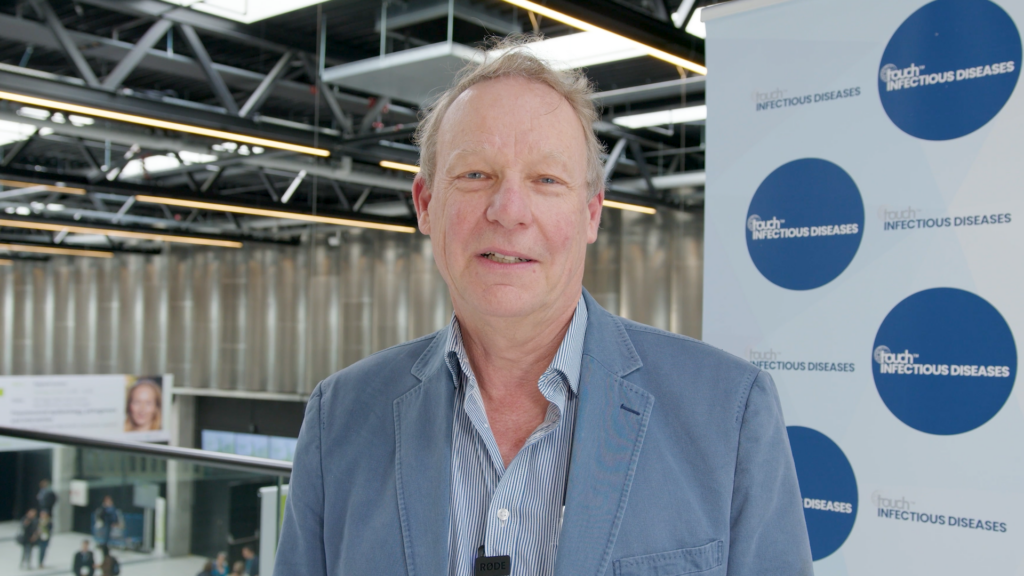 Dr Simon Feys (University Hospitals Leuven, Belgium) summarizes his research on viral-associated pulmonary aspergillosis (VAPA) – a relatively new fungal superinfection increasingly observed in ICU patients with severe influenza and COVID-19. His research spans the pathophysiology, diagnosis and clinical impact of VAPA, revealing both the biological mechanisms behind the infection and the systemic gaps in its detection and treatment. In this interview, Dr Feys discusses the insights driving his research, the challenges of diagnosing VAPA in critical care, and why fungal infections may be a more urgent threat than previously understood.
Dr Simon Feys (University Hospitals Leuven, Belgium) summarizes his research on viral-associated pulmonary aspergillosis (VAPA) – a relatively new fungal superinfection increasingly observed in ICU patients with severe influenza and COVID-19. His research spans the pathophysiology, diagnosis and clinical impact of VAPA, revealing both the biological mechanisms behind the infection and the systemic gaps in its detection and treatment. In this interview, Dr Feys discusses the insights driving his research, the challenges of diagnosing VAPA in critical care, and why fungal infections may be a more urgent threat than previously understood.
Q1. Could you summarize your current research into viral-associated pulmonary aspergillosis?
Over the past five years, I’ve focused on viral-associated pulmonary aspergillosis (VAPA) – an invasive fungal disease that can occur in ICU patients with severe influenza or COVID-19. It’s a relatively new clinical entity, only recognized after the 2009 influenza pandemic and later seen during the COVID-19 crisis. Traditionally, invasive aspergillosis was linked to immunocompromised patients, but we now know it can also affect those with viral pneumonia, even without classical risk factors.
My work has looked at this condition comprehensively – from the underlying pathophysiology to diagnostics, epidemiology and potential treatment approaches. Early on, I studied patient samples, primarily bronchoalveolar lavage (BAL), and discovered what we’ve called a “perfect storm” in the lungs. The virus damages the epithelial barrier and impairs mucociliary clearance, allowing Aspergillus spores to persist. At the same time, phagocytes fail to clear them effectively, and neutrophils don’t seem to mount an adequate antifungal response. These insights came from a combination of multi-omics analysis and experimental work, including murine models led by collaborators.
Q2. Why is understanding the pathophysiology of VAPA so clinically important?
Because we’re still facing major diagnostic and therapeutic challenges. Clinically, it’s nearly impossible to distinguish a patient with VAPA from one without – it’s often masked by general features of respiratory distress. Radiological findings are also non-specific in these patients. That means we have to rely on mycological testing from BAL samples to diagnose VAPA. But BAL is invasive and isn’t routinely done in every centre.
That’s why we’re interested in exploring host immune profiling as a future diagnostic strategy. Because aspergillosis is so dependent on host immune response, detecting an abnormal or insufficient antifungal response could help identify patients at risk – or already infected – even before the fungus is isolated. It’s a new direction that could enable earlier and less invasive diagnostics.
Q3. Despite antifungal treatment, mortality in VAPA remains high. What are the prospects for improving outcomes?
Mortality rates can still reach around 50%, even with antifungal therapy. That tells us antifungal drugs alone may not be enough. While new antifungal agents are in development, we’re also beginning to investigate immunomodulatory treatments. The idea is to enhance or regulate the immune response – either boosting it in patients who can’t mount an effective defence, or damping excessive inflammation that causes tissue damage.
This is inspired in part by what we learned during COVID-19, where immunomodulators like baricitinib proved effective. We could potentially apply a similar concept to fungal infections – perhaps with monoclonal antibodies or other immune-targeting drugs. But for that, we need a detailed understanding of the immune dysfunctions occurring in VAPA – hence the emphasis on pathophysiology in our research.
Q4. You’ve highlighted major inconsistencies in reported VAPA incidence. What did your research uncover, and how can we improve detection?
The reported incidence of VAPA in ICU patients ranges widely – from as low as 1–2% to over 30%. A key factor behind this variation is diagnostic sampling. In our study published in the American Journal of Respiratory and Critical Care Medicine, we found that centres with high BAL sampling rates (above 50%) reported VAPA in about 20% of patients. In contrast, those with lower sampling rates reported around 9%, and studies that didn’t report sampling rates at all had incidence estimates around 5–6%. That suggests a large number of cases are simply being missed.
We also conducted a retrospective study in Leuven, including over 400 ventilated patients with influenza or COVID-19, all of whom underwent BAL. We found that aspergillosis was more common – and more strongly associated with mortality – than bacterial superinfections. Despite this, bacterial superinfections are far more widely studied. This imbalance highlights the need for greater awareness, standardised diagnostic approaches, and more research into fungal superinfections in the ICU setting.
About Simon Feys
Dr Simon Feys earned his medical degree from KU Leuven, Belgium, in 2018. He is currently undergoing specialist training in internal medicine with a subspecialty in intensive care at University Hospitals Leuven. Alongside his clinical work, he has obtained his PhD in 2024 under guidance of Prof Joost Wauters at KU Leuven. His research investigates viral-associated pulmonary aspergillosis (VAPA) in critically ill patients, integrating both clinical insights and translational science. Using multi-omics techniques on patient-derived samples, Dr Feys aims to unravel the disease’s underlying mechanisms and identify new avenues for diagnosis, prognosis, and treatment. His findings have been featured at international conferences including ECCMID, TIMM, and ISHAM, and he has published first-author papers in leading journals such as Intensive Care Medicine, The Lancet Respiratory Medicine, Clinical Infectious Diseases, The Lancet Microbe, and the American Journal of Respiratory and Critical Care Medicine.
Interviewer: Caroline Markham
Disclosure: Simon Feys has received grant/research support from ESCMID and FWO (Research Foundation Flanders). He has received travel support from Pfizer and Gilead, and support for public PhD defense from Pfizer, Gilead and Mundipharma. He has received speaker’s fees from Healthbook Company.
Cite: Dr Simon Feys on unmasking VAPA: Investigating fungal superinfections in viral pneumonia. touchINFECTIOUS DISEASES. May 7th, 2025
SIGN UP to touchINFECTIOUS DISEASES!
Join our global community today for access to thousands of peer-reviewed articles, expert insights, and learn-on-the-go education across 150+ specialties, plus concise email updates and newsletters so you never miss out.











